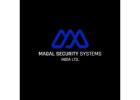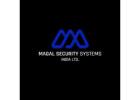Choose "Make this ad premium" at checkout.
Cybersecurity Proactive Defense: Safeguarding Against Threats Before They Strike
- Location: New Zealand
Cybersecurity Proactive Defense: Safeguarding Against Threats Before They Strike
In a digital world where cyber threats evolve constantly, the concept of proactive defense has become a cornerstone of effective cybersecurity. Unlike reactive defense, which only responds to threats once they appear, proactive defense strategies focus on identifying, mitigating, and preventing cyber risks before they escalate. By prioritizing a proactive approach, organizations can stay ahead of potential cyber attacks, reduce downtime, and protect critical assets. Here’s a closer look at proactive defense, its components, and why it’s essential for modern cybersecurity.
What is Proactive Defense in Cybersecurity?
Proactive defense in cybersecurity involves a combination of tactics, techniques, and technologies designed to detect and neutralize threats before they impact a system. Unlike traditional cybersecurity approaches that respond after a breach, proactive defense actively seeks out potential vulnerabilities and areas of exposure within an organization’s network. This forward-thinking strategy involves risk assessment, continuous monitoring, and predictive analysis to anticipate where threats might arise, thus minimizing risks.
Proactive defense is particularly valuable in today’s cyber landscape, where threats such as malware, phishing attacks, ransomware, and insider threats continue to rise. With proactive defense, organizations aren’t waiting to be attacked; instead, they are constantly preparing, analyzing, and improving their defenses to ensure they can handle emerging cyber challenges.
Key Components of Proactive Cyber Defense
To successfully adopt a proactive defense approach, organizations need to implement specific tools and practices that support threat anticipation and response. Some key components include:
- Threat Intelligence and Monitoring
Threat intelligence involves gathering and analyzing information about current and emerging threats to prevent attacks. Through constant monitoring, organizations can detect unusual activity, recognize trends, and receive real-time alerts about suspicious behavior. By staying informed, companies can adjust their defenses based on the latest intelligence about hacking tools, malicious actors, and vulnerabilities. - Vulnerability Assessments and Penetration Testing
Regular vulnerability assessments and penetration tests help identify weaknesses in an organization’s systems before hackers can exploit them. Vulnerability assessments scan for security flaws, while penetration testing simulates attacks to test the resilience of defenses. These assessments allow IT teams to fix vulnerabilities, strengthen their network, and limit the risk of future breaches. - Zero-Trust Architecture
Zero-trust architecture operates on the principle of “never trust, always verify.” This means that no user, device, or system is trusted by default, even if it’s within the organization’s network. Zero-trust models continuously authenticate and authorize every access request, reducing the chances of unauthorized access and data leaks. By minimizing trust boundaries, zero-trust architecture is highly effective in preventing lateral movement across a network. - Security Awareness Training
Employees can unknowingly click on phishing emails, download malicious attachments, or fail to secure their devices. Security awareness training programs educate employees on recognizing cyber threats and following best practices to prevent breaches. This proactive measure strengthens an organization’s overall defense by empowering employees to make informed decisions. - Automated Security Solutions
AI-driven security tools and automated threat detection solutions can continuously monitor networks and quickly respond to threats. By using machine learning to analyze vast amounts of data, these tools can identify anomalies, spot unusual patterns, and generate early warnings. Automation helps reduce the workload on security teams and ensures faster responses to potential threats.
Contact US:
Email id :- sales@nsp.co.nz
contact :- 0508010101






Useful information
- Avoid scams by acting locally or paying with PayPal
- Never pay with Western Union, Moneygram or other anonymous payment services
- Don't buy or sell outside of your country. Don't accept cashier cheques from outside your country
- This site is never involved in any transaction, and does not handle payments, shipping, guarantee transactions, provide escrow services, or offer "buyer protection" or "seller certification"
Related listings
-
 OmniTraxTechnology Opportunities - - October 28, 2024
OmniTraxTechnology Opportunities - - October 28, 2024Discover Omnitrax, the premier buried cable intrusion detection sensor designed for discreet outdoor security. With its advanced technology, Omnitrax offers the lowest vulnerability, ensuring your property remains safe and protected. Ideal for variou...
-
 Tunnel GuardTechnology Opportunities - - October 28, 2024
Tunnel GuardTechnology Opportunities - - October 28, 2024Secure your assets with TunnelGuard, the leading solution for tunnelling detection. Our advanced seismic sensors provide real-time monitoring, ensuring maximum protection for bank vaults and high-security facilities. Designed to detect unauthorized t...
-
 Understanding Vulnerability Management: Protecting Your Business from Cyber ThreatsTechnology Opportunities - - October 28, 2024
Understanding Vulnerability Management: Protecting Your Business from Cyber ThreatsTechnology Opportunities - - October 28, 2024Understanding Vulnerability Management: Protecting Your Business from Cyber Threats In today’s increasingly digital world, vulnerability management has become an essential component of cybersecurity for any organization. Cyber threats are more ...